National Dialogue on Ratifying the Comprehensive Nuclear-Test-Ban Treaty (CTBT) – Nepal
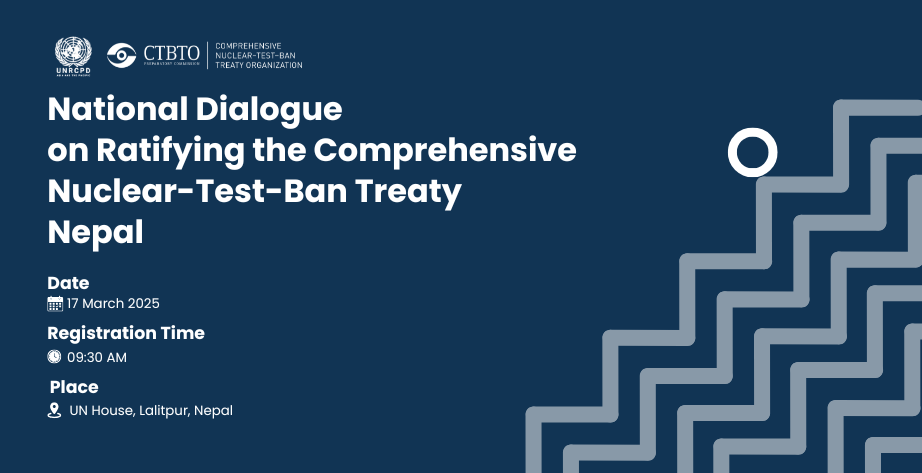
17 March 2025, UN House, Nepal
Nepal was one of the first countries to sign the Comprehensive Nuclear-Test-Ban Treaty when it opened for signatures in 1996, in line with their long-standing commitment to a world free from weapons of mass destruction. However, Nepal has yet to ratify the Treaty as of March 2025. To encourage constructive dialogue, identify the road ahead and allay any Nepali concerns surrounding this crucial next step of its relationship with the CTBT, the United Nations Regional Centre for Peace and Disarmament in Asia and the Pacific (UNRCPD) hosted a meeting with Nepali government officials and representatives of key ministries, jointly with the Comprehensive Test Ban Treaty Organization (CTBTO) and Nepal’s Ministry of Foreign Affairs.
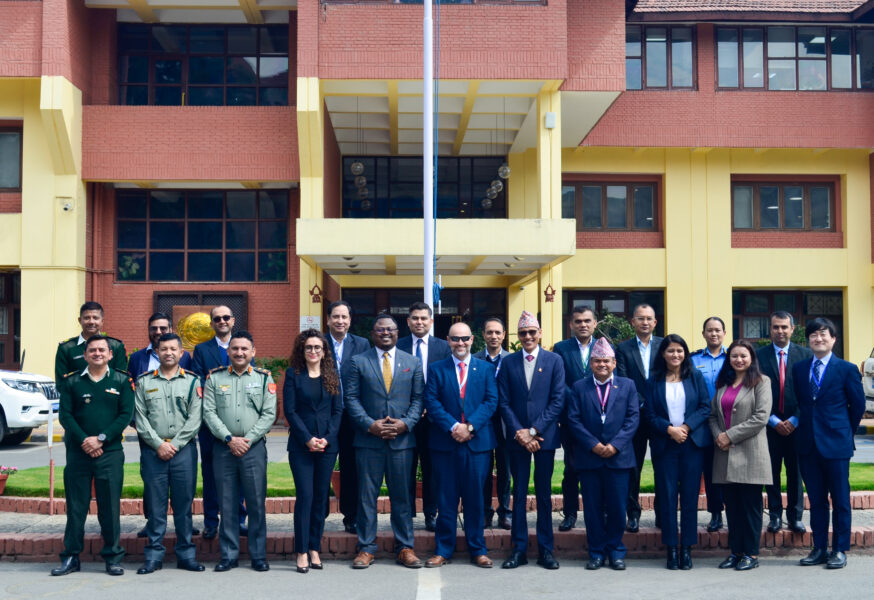
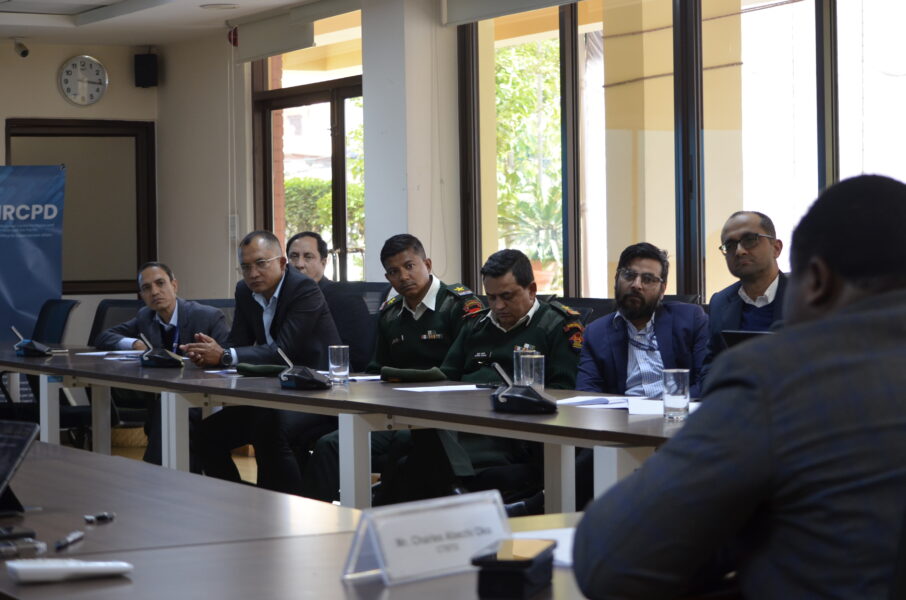
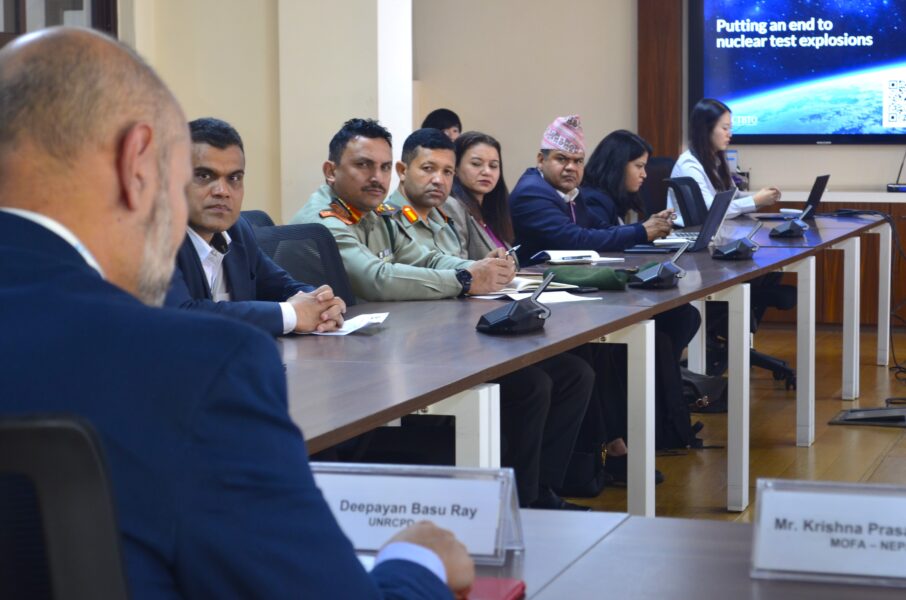
SESSION 1:
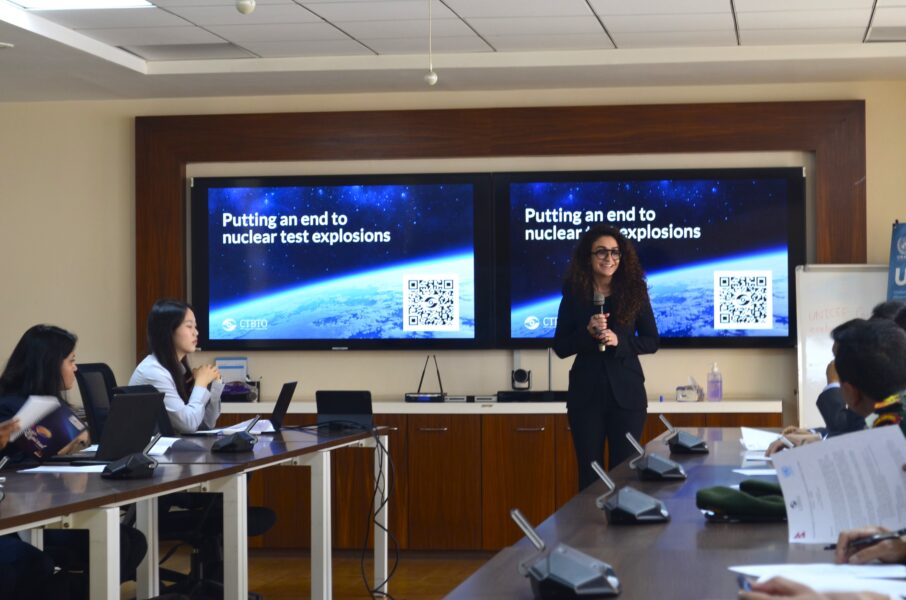
Session 1 opened with a presentation by the CTBTO’s Ms. Sanam Shantiaei to bring participants up to speed on the CTBT itself, including its importance as a comprehensive ban on all nuclear detonations in the world’s international arms control architecture. Without the capacity to test their weapons, it is impossible for states to expand their nuclear arsenals or develop new types of atomic munitions. To ensure compliance, the CTBTO utilizes the International Monitoring System, a network of more than 300 monitoring stations using seismic sensors, hydroacoustic microphones, infrasound and radionuclide detectors. Compiled in the International Data Centre (IDC), real time analysis can detect nuclear detonations anywhere on the planet, with findings passed to signatory states twice per year. Furthermore, the IMS has significant civil and scientific applications, including for tsunami warning and wildlife tracking.
The government officials in attendance engaged in discussions, with a particular interest on implementation obligations and benefits for States Parties under the Treaty. The CTBTO noted that the Treaty requires all States Parties to prohibit nuclear explosions for any purpose, and that States Parties may voluntarily host international monitoring stations (IMS) upon ratifying the treaty. The CTBTO experts further noted that the IMS could further assist in disaster relief efforts, from the data that the IMS collects and the analysis of such data provided by the International Data Centre (IDC) hosted in Vienna. Nepal already has a National Data Centre (NDC) in operation, but more could be done to build Nepal’s capacity to actively make use of the available data to their benefit. In this regard, technical trainings are available through the CTBTO to allow swift utilization of the data by national entities in the event of a natural disaster such as an earthquake.
The session continued with a CTBTO’s Mr. Charles Oko expanding on the treaty’s context. Following the 1962 Cuban Missile Crisis and the signing of the 1963 Partial Test Ban Treaty, the CTBT started development through negotiations in the 1990’s culminating in its creation in 1996, where Nepal was among the first to sign it. In the present, 9 new states have ratified the CTBT and 1 more has signed. Ratification is a national decision that only the state can make, with the support if requested of the Provisional Technical Secretariat (PTS). With this being clear, the conversation turned to where Nepal is in its ratification process.
SESSION 2:
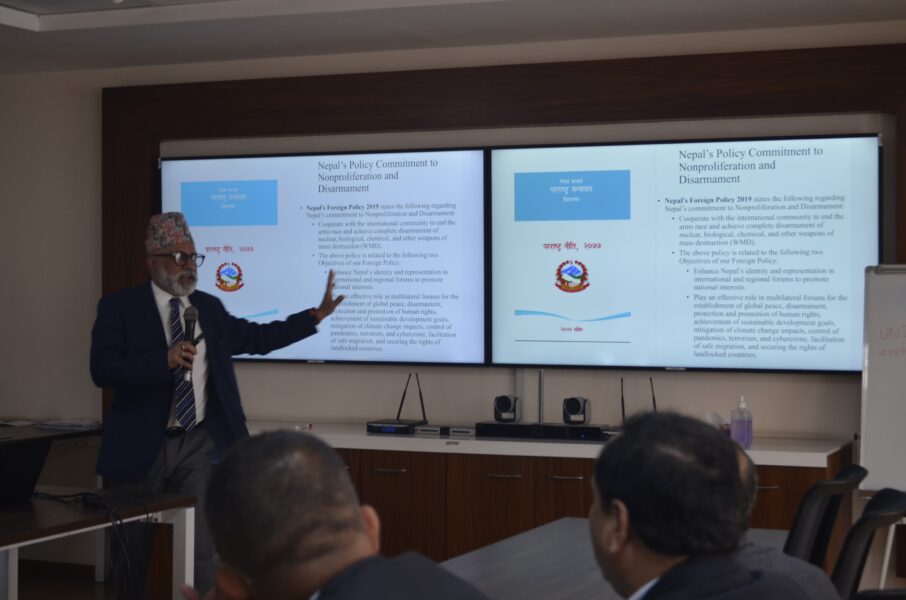
To date, Nepal has ratified the Biological Weapons Convention (BWC), the Chemical Weapons Convention (CWC), and the Non-Proliferation Treaty (NPT). The CTBT and the Treaty on the Prohibition of Nuclear Weapons (TPNW), have both been signed but not ratified. Nepal’s position is clear, as it consistently votes in favor of annual resolutions prompting states to ratify these treaties and agreements.
Nepal’s former Permanent Representative to the United Nations and International Organizations in Vienna, H.E. Mr. Prakash Kumar Suvedi, presented to participants how these stances have been written into standing policy of Nepal in 2020. He also summarized Nepal’s strengths and weaknesses in this field:
Strengths:
- Nepal has shown unwavering support to the general and complete disarmament of all kinds of weapons of mass destruction
- The notion of disarmament and non-proliferation is embedded profoundly in the nation’s values and practices
- Nepal has often overlooked immediate exigencies in committing to those values
Weaknesses:
- Its first residential ambassador in Vienna was in 2016 – new to the disarmament scene
- Signed and ratified the NPT in 1972, but only in 2008 became member of the IAEA (36 years later)
- Nepal is not a member of the Conference on Disarmament
- Nepal does not have a residential diplomatic mission in the Hague
- An auxiliary seismic monitoring station was meant to be established in Nepal, but so far this has not been achieved (still in the planning phase)
H.E. Mr. Suvedi also emphasized that Nepal requires a more comprehensive understanding of the potential of “dual-use” technologies, a broader commitment to international obligations and a wider, whole of government approach to its engagement with global arms control frameworks.
SESSION 3:
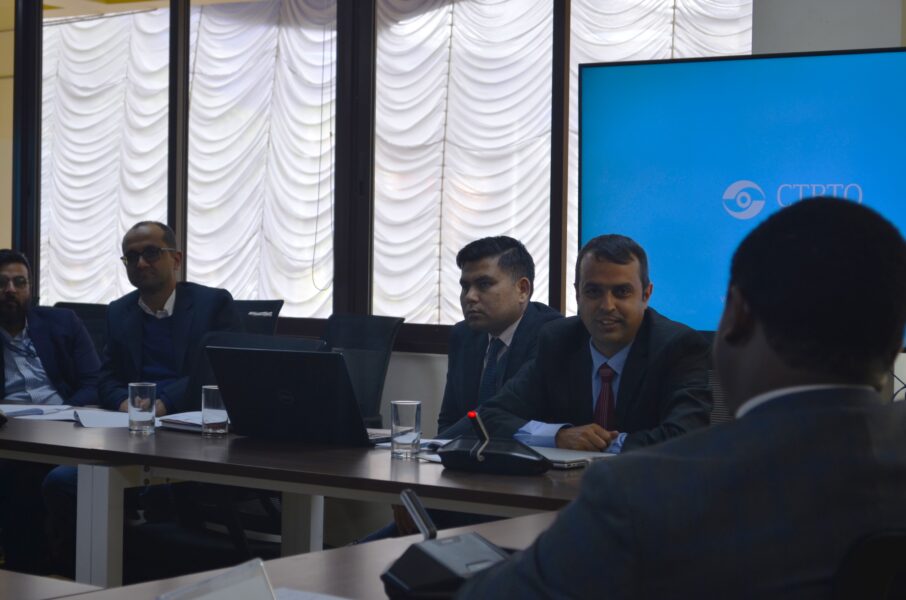
In the third session, the Ministry of Law, Justice and Parliamentary Affairs delivered its remarks on Nepal’s treaty ratification process, and what this would mean for its eventual ratification of the CTBT. In general, ratification is granted by either a simple or two thirds majority in Nepal’s parliament, as enshrined in the Nepali constitution. For the CTBT, the Ministry specified it is likely the treaty would require the latter format. Although power rests with the Federal Government, provincial governments must be consulted during the process as well. The Power to conclude the treaty is only held by the President, Prime Minister or the Minister of Foreign Affairs.
MOFA recognized there needs to be an agreement on which Ministry would take the lead on CTBT ratification, with options running from MOFA to the Ministry of Defense (MOD) and Ministry of Education, Science and Technology. An interministerial team will be assembled to study the text, before it is sent to cabinet and eventually to parliament. Mr. Oko asserted that there is no immediate enforcement mechanism required upon ratification or other requirements for additional financial contributions by ratifying the treaty.
SESSION 4:
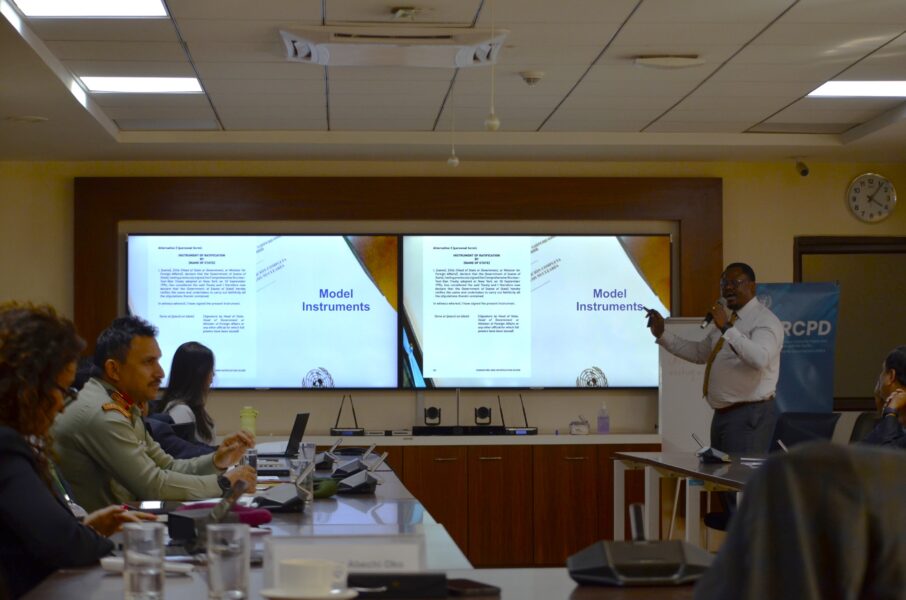
Session 4, delivered by the CTBTO’s Mr. Oko, outlined the available support for Nepal moving forwards in its ratification journey. Nepal’s entry would further enhance its global standing and remind the world that nuclear explosions of any kind are to be abolished. Once ratification is complete domestically, Nepal can deposit the instrument of ratification to the UN Secretary-General. All throughout this process support is available through the CTBTO, its NDC development workshops, NDC capacity building projects, Station Operators Training as well as technical, software and equipment support.
Numerous questions were fielded by Nepal, all of which were allayed by the CTBTO’s representatives. Nepal does not need to pay any additional funds as a result of ratification, as Nepal is already contributing its assessment as a signatory to the treaty. It was further noted that the data collected by the IMS only collected the data specified in the text of the treaty, and that Nepal can vet this data as the CTBTO shares the full raw data collected by its global IMS network with all signatory States. Regarding such a monitoring station and potential challenges with its activation, Nepal was assured that it can receive international standard monitoring equipment and training through the CTBTO and does not have to share any of that data if it does not wish to.
Government officials also asked about the difference between the NPT and the CTBT. CTBTO and UNODA noted that while Nepal being a party to the NPT clearly shows its commitment to nuclear non-proliferation, the CTBT fills an important stepping stone towards a more tightly knitted international mechanism to ensure a world free from nuclear weapons. Having signed the treaty already, Nepal has demonstrated its opposition to such weapons, and by ratifying it would increase the international consensus against nuclear weapons.
Further comments highlighted the CTBTO’s cooperation with the International Atomic Energy Association (IAEA) and its capacity to provide disaster relief training and equipment for Nepali teams. UNODA is eager to understand what support institutions like the Armed Police Force (APF) would require to enhance their capacity to operate in nuclear, chemical, or biological threat environments in the event of a disaster or terror attack using these materials.
SESSION 5:
For the final session of the meeting, the CTBTO explained the legal and technical aspects surrounding final ratification. It involves a two step process:
- National ratification as per the process enshrined in the state’s constitution
- Deposition of the instrument of ratification with the UN Secretary-General in New York
There is no established form for the instrument but must contain some main elements that Nepal can identify with model forms provided by the CTBTO. A simple product is required, but this is only possible once domestic requirements are met. Ratification has always been and remains a national decision for Nepal alone. Already being a signatory State, ratification is the next logical development for Nepal and an affirmation of all that it has already achieved.

